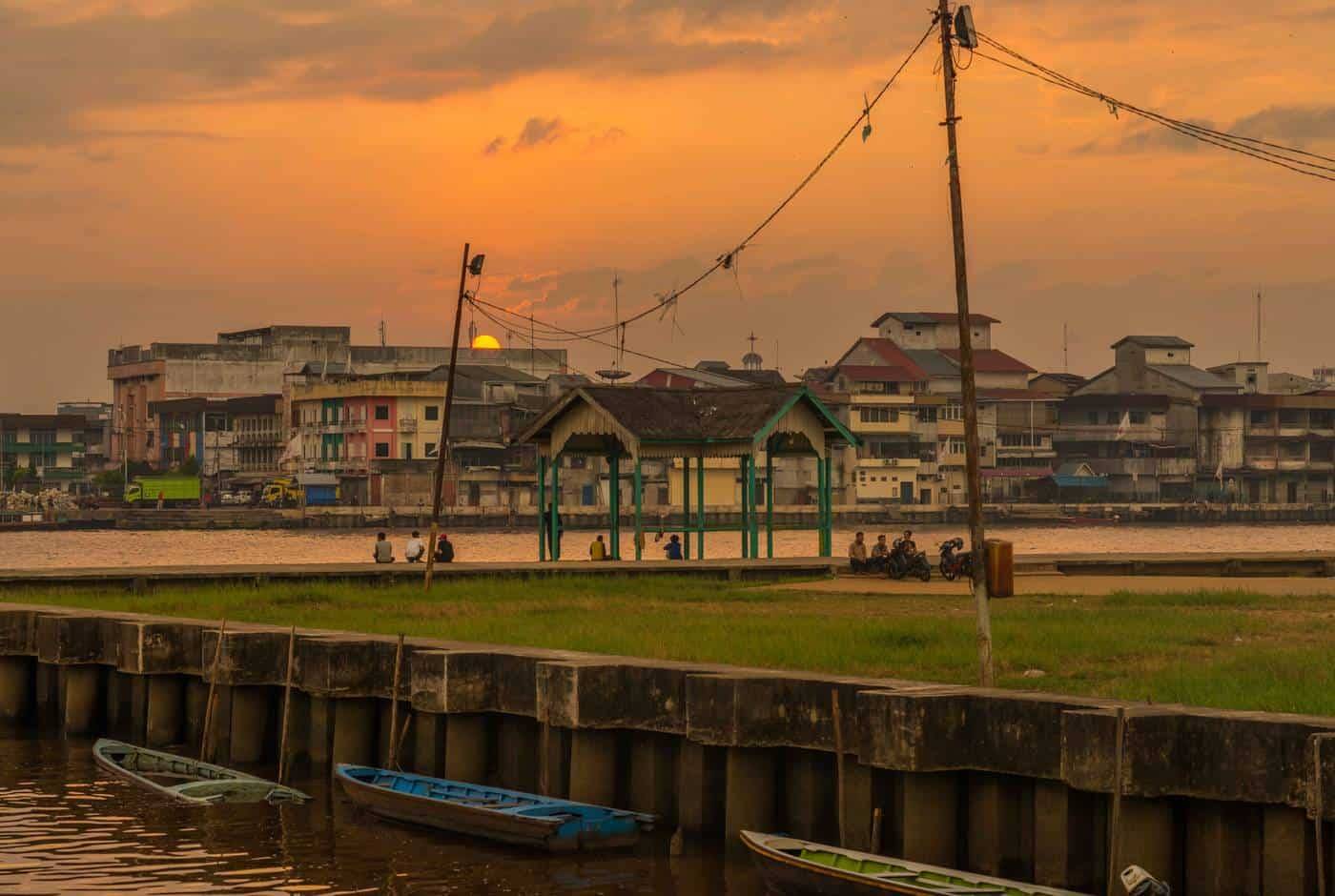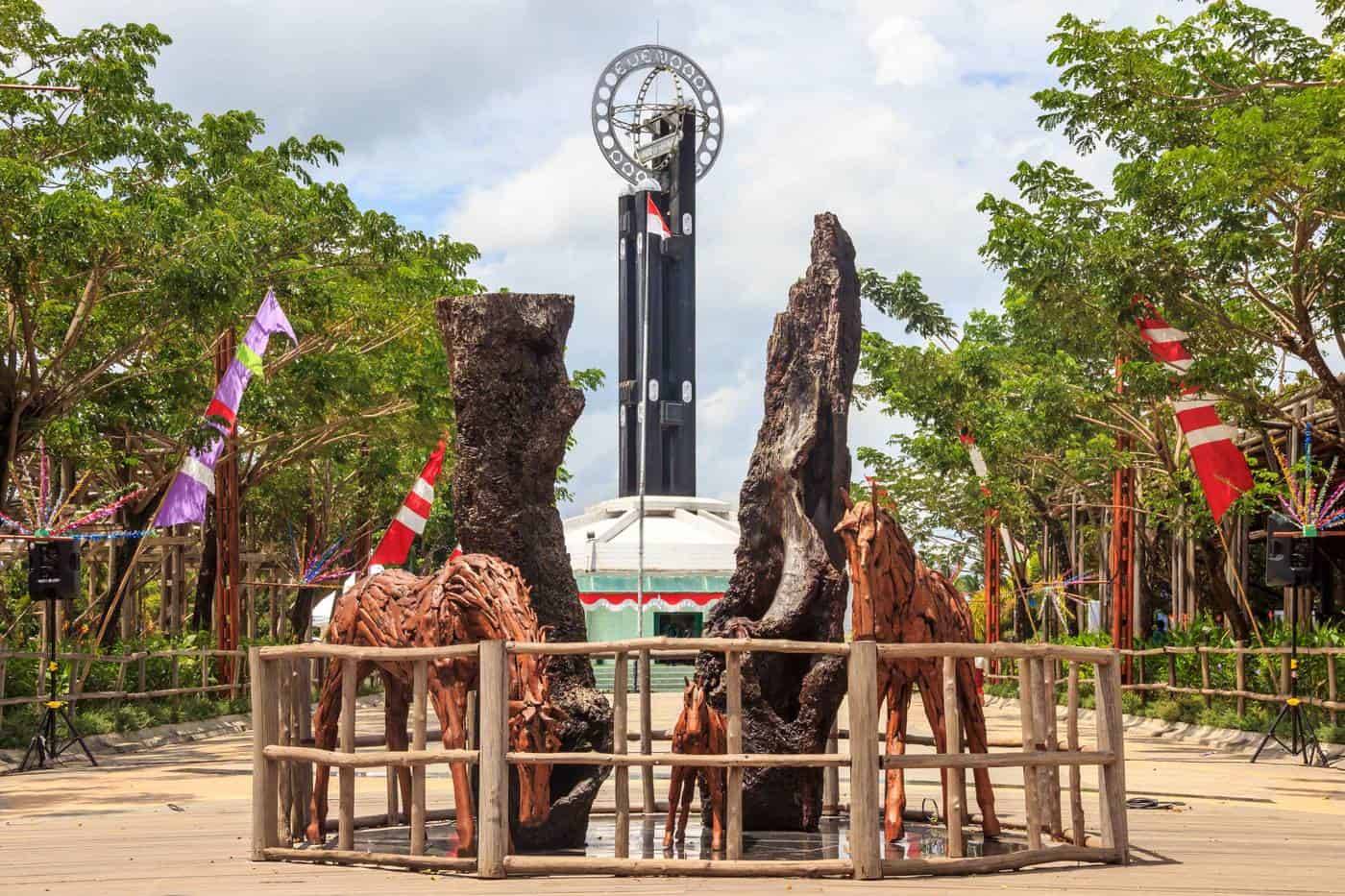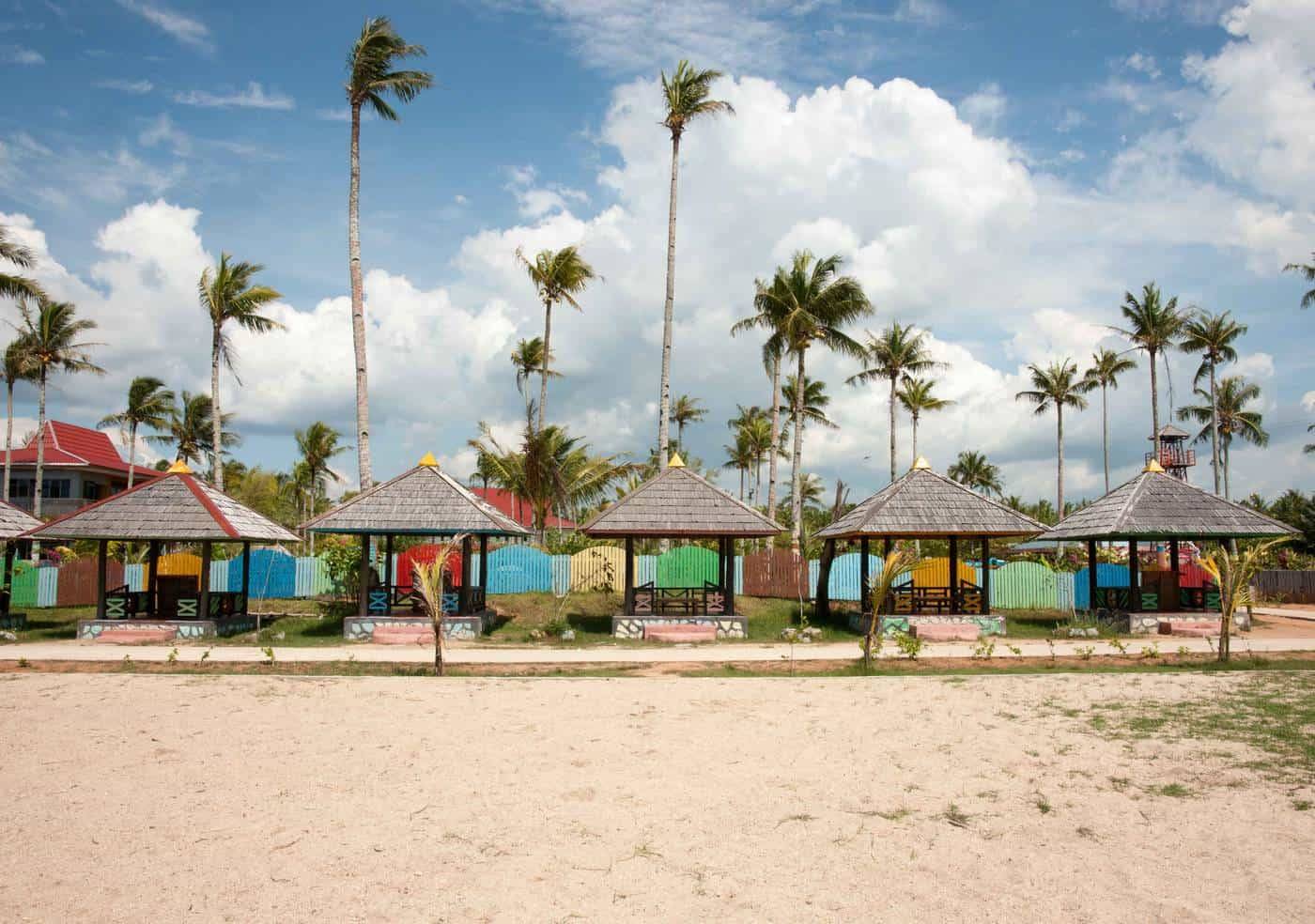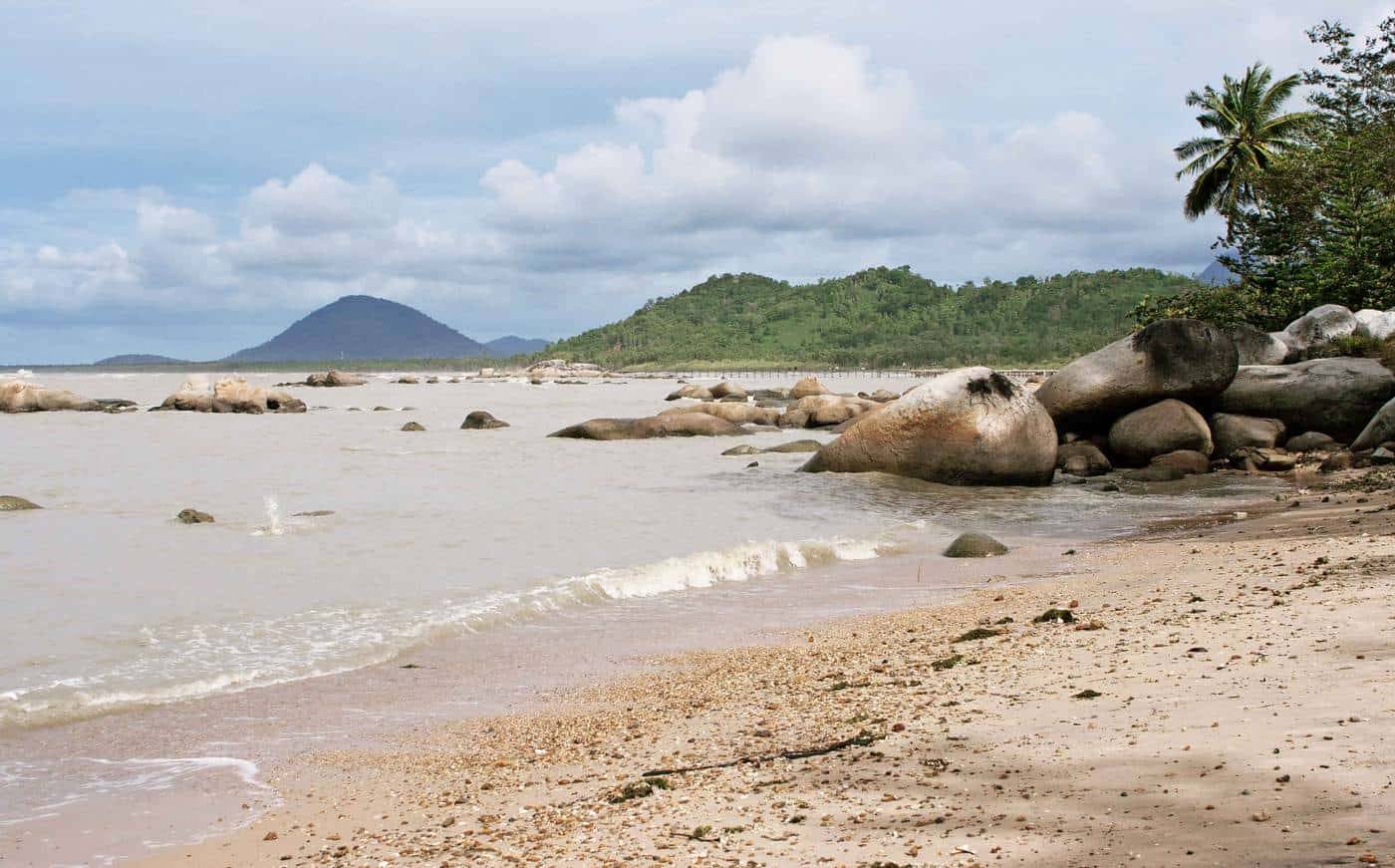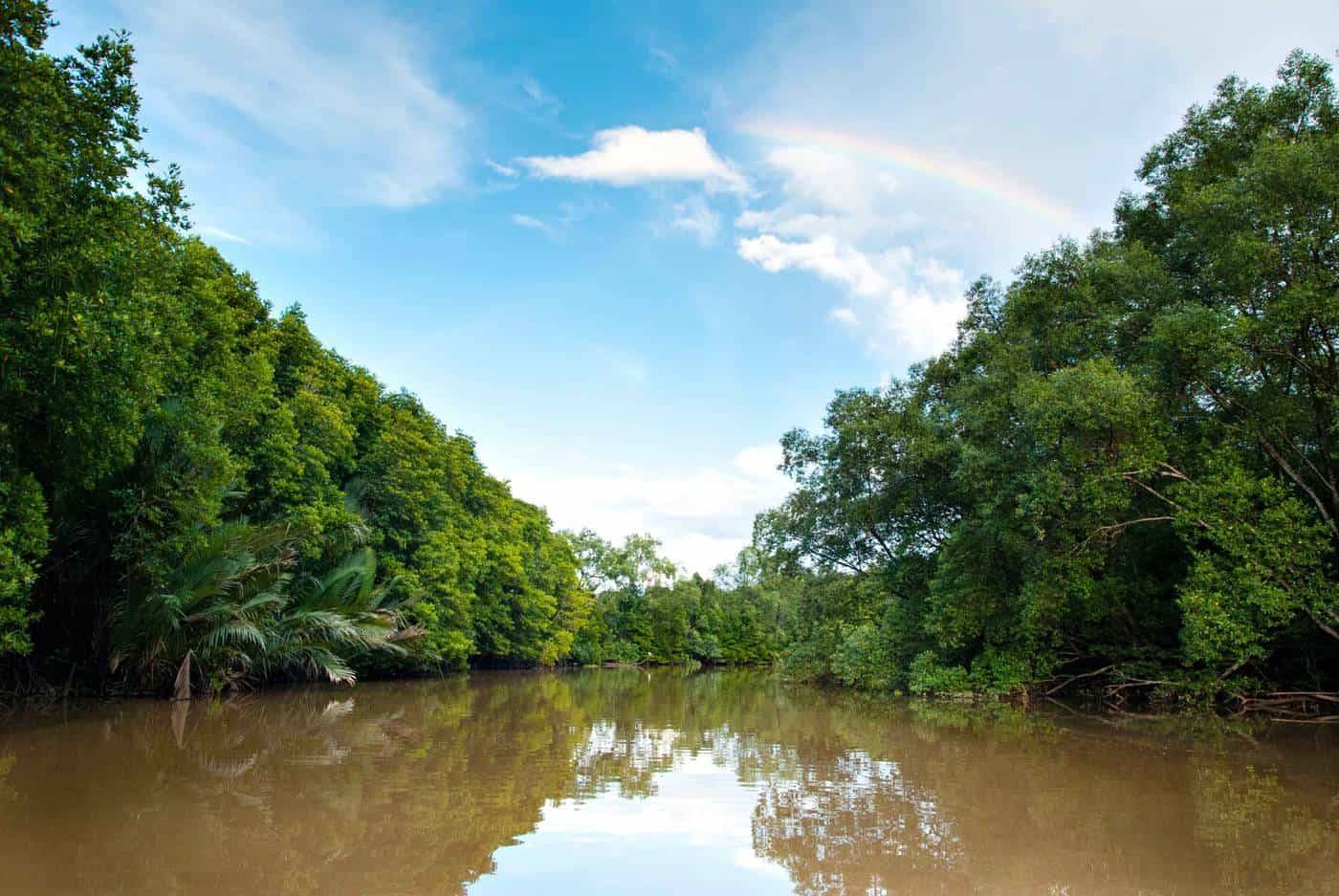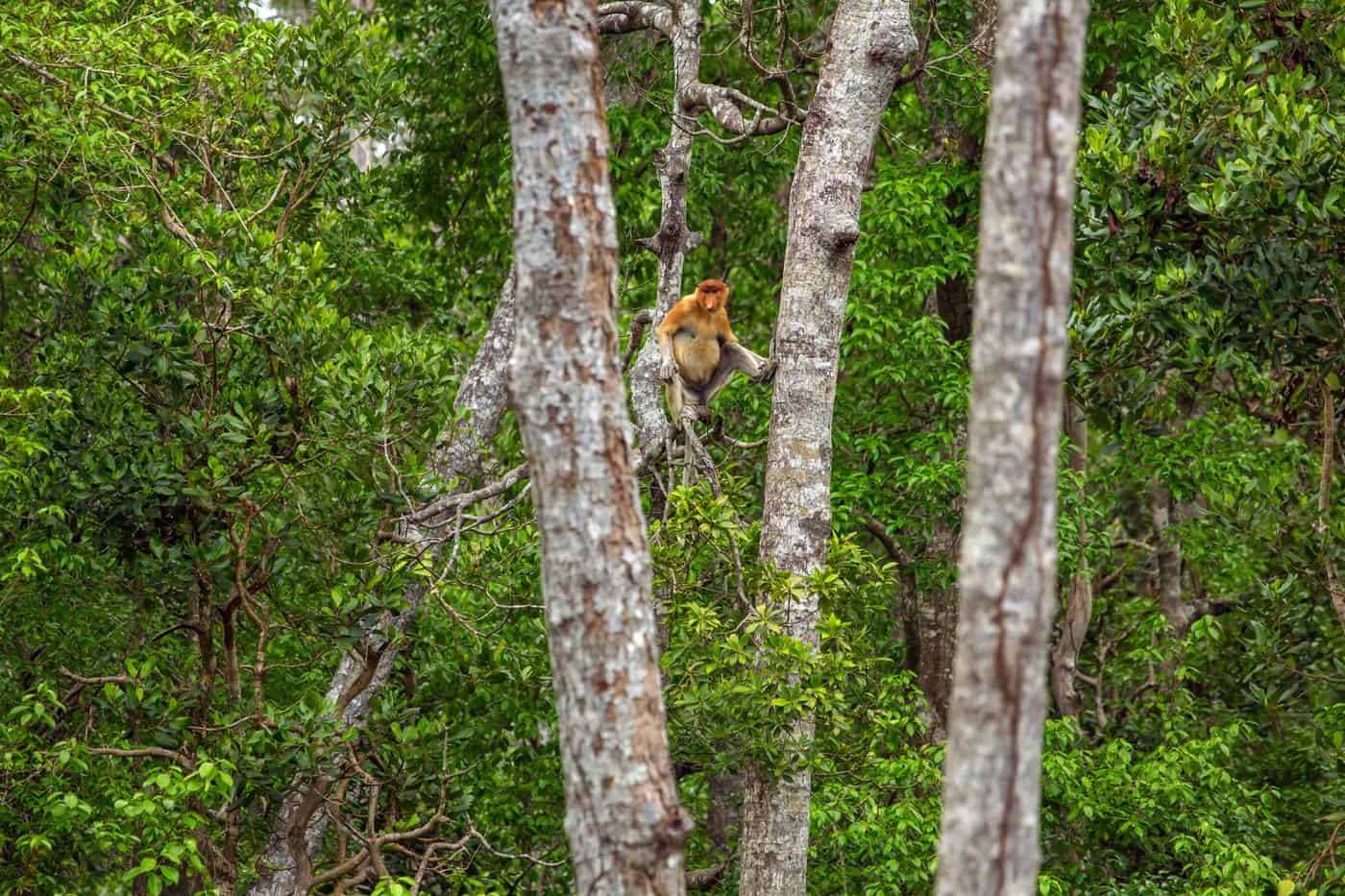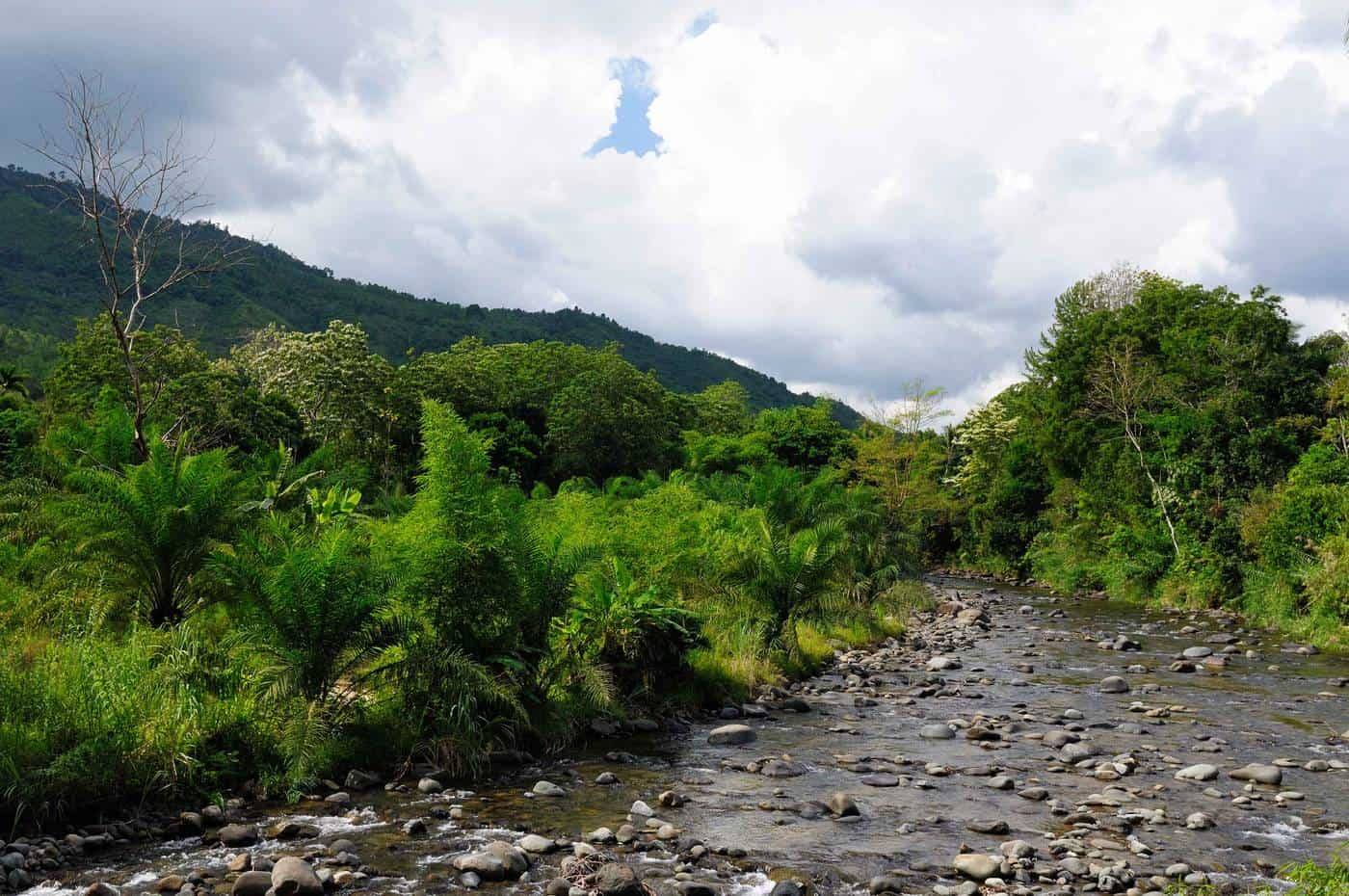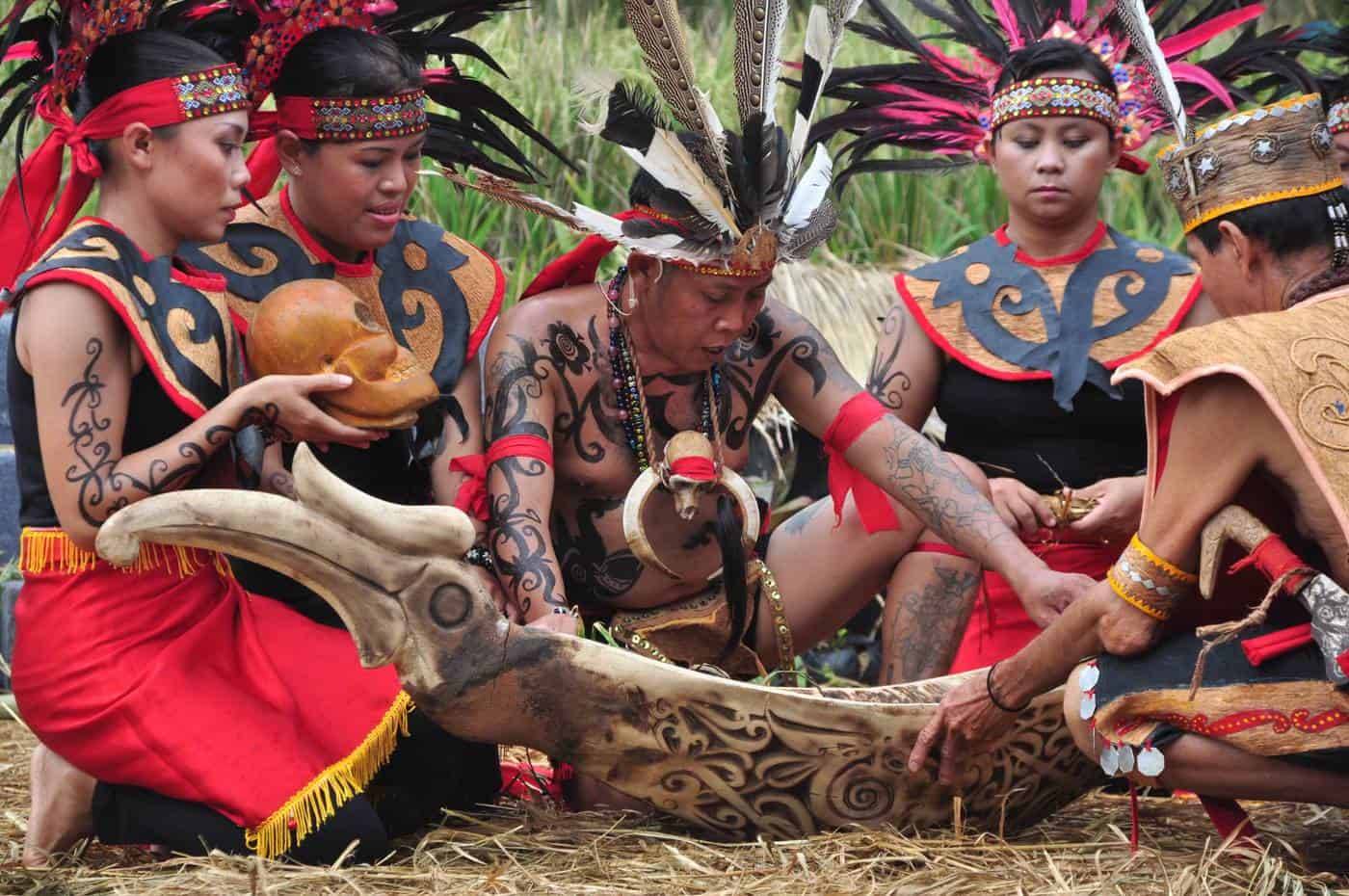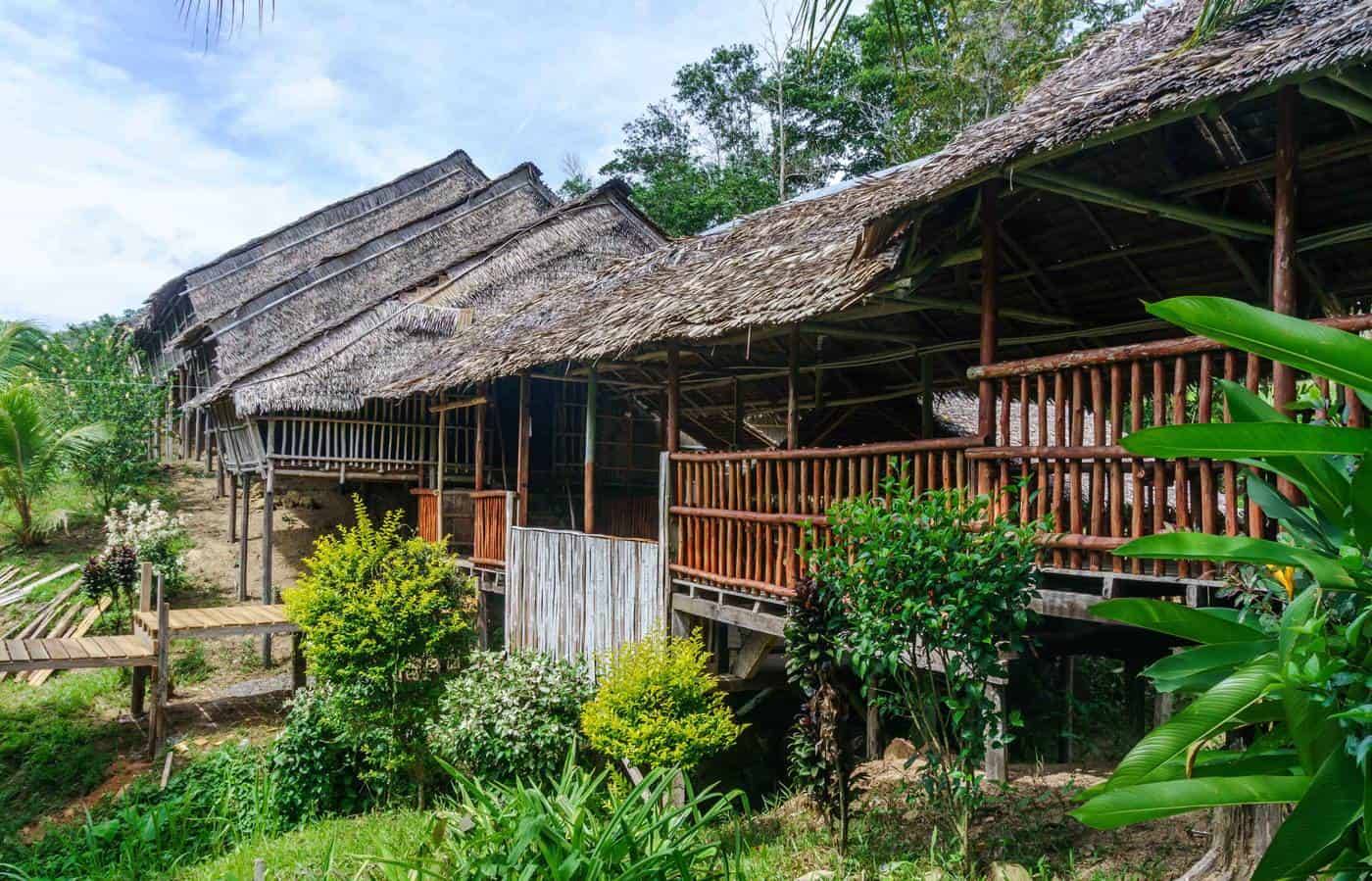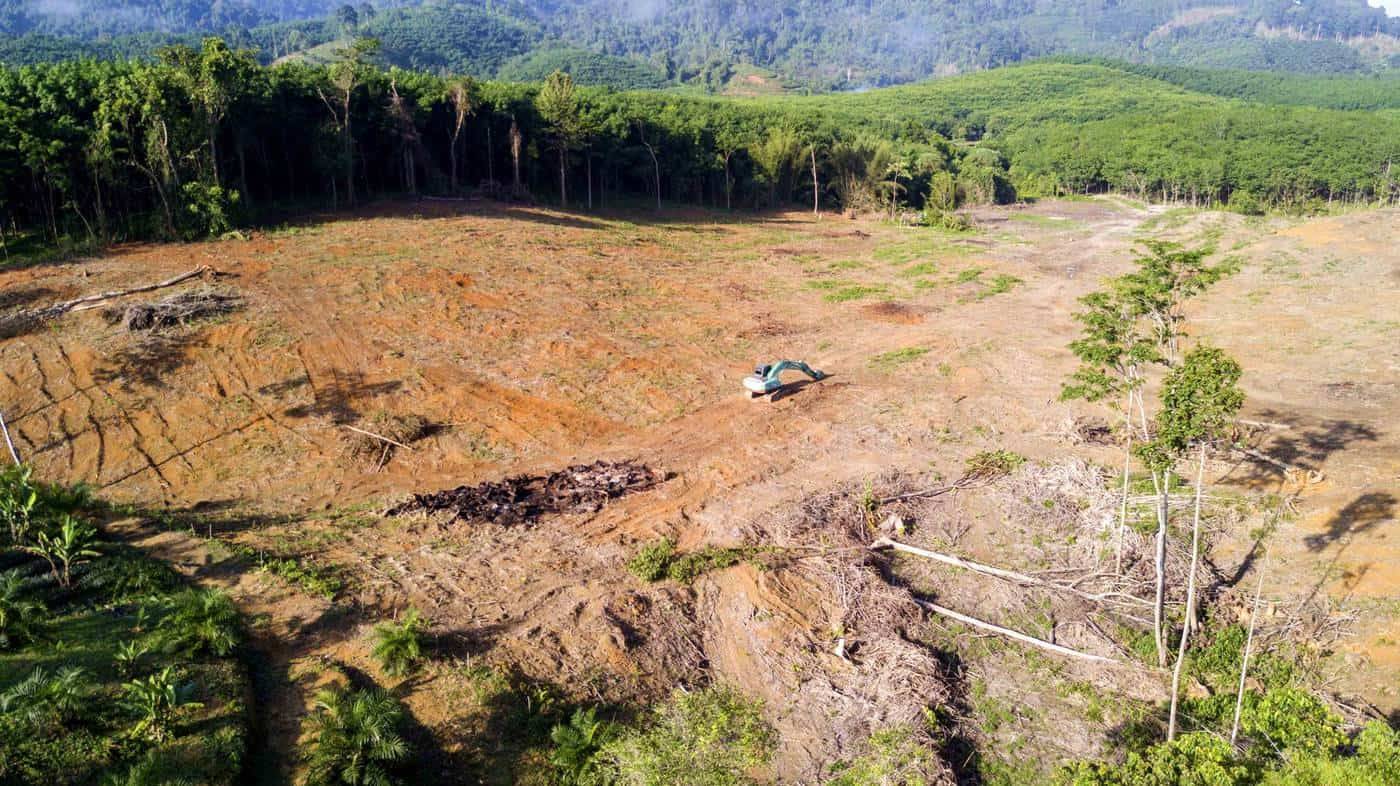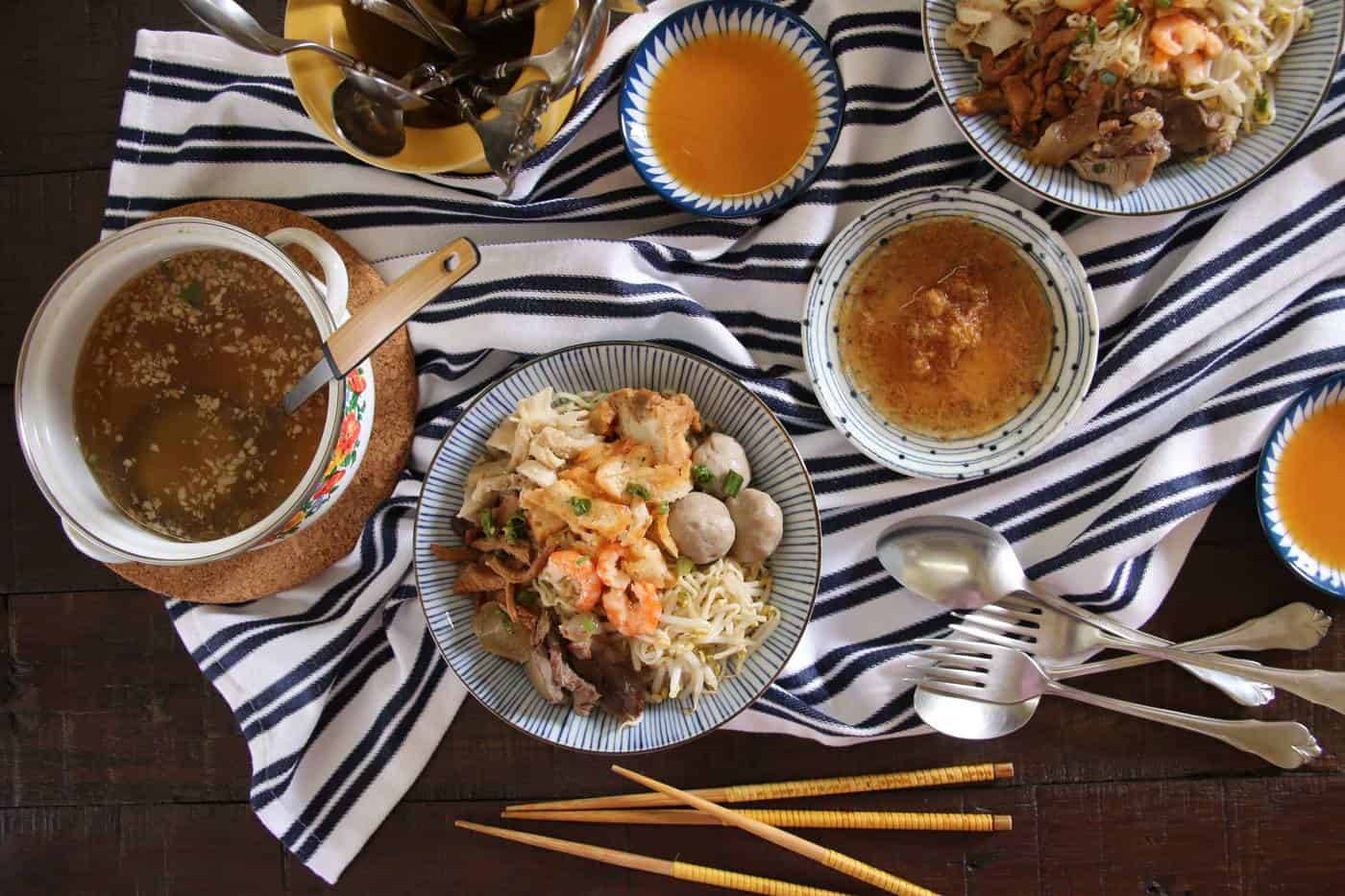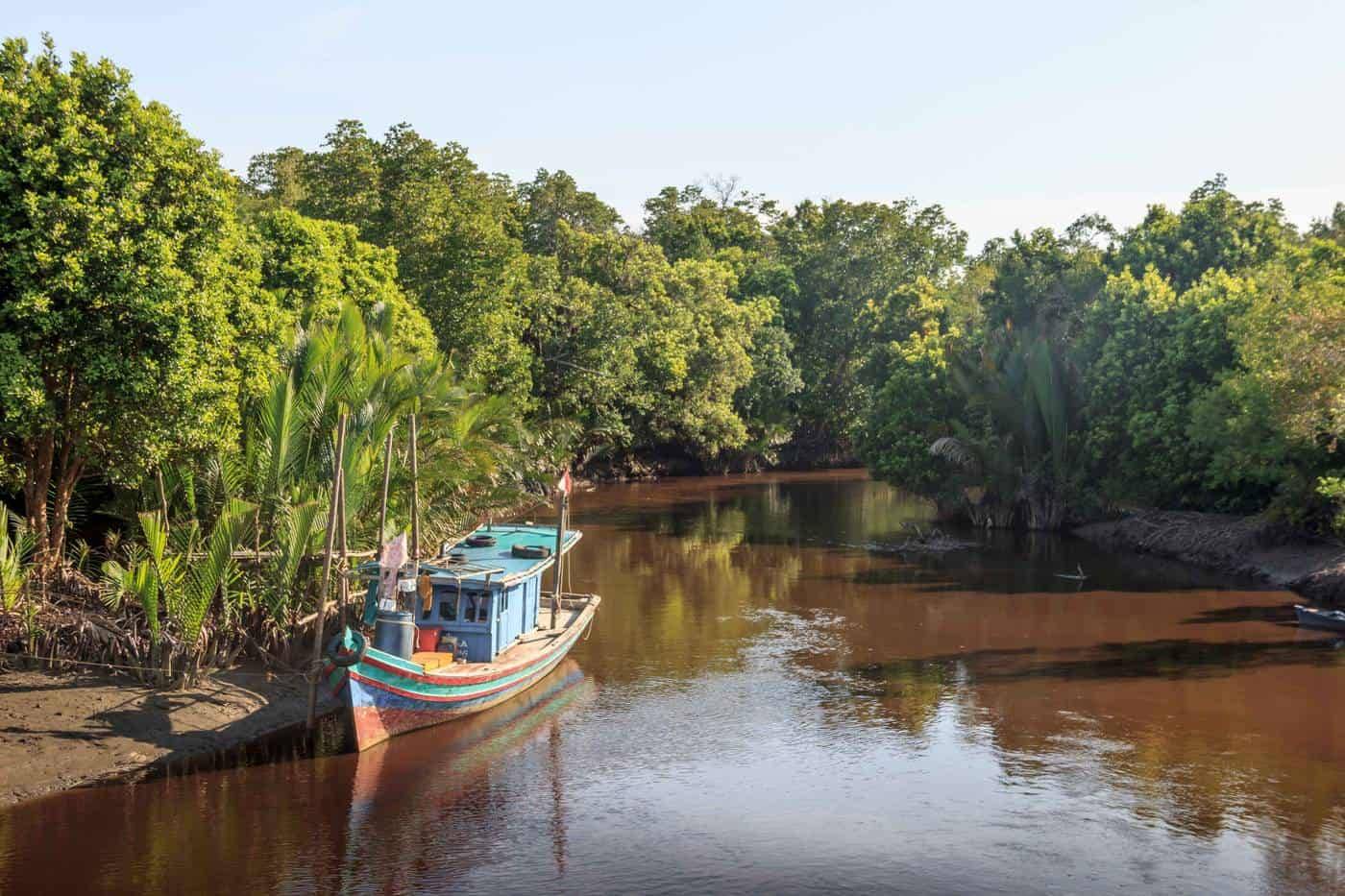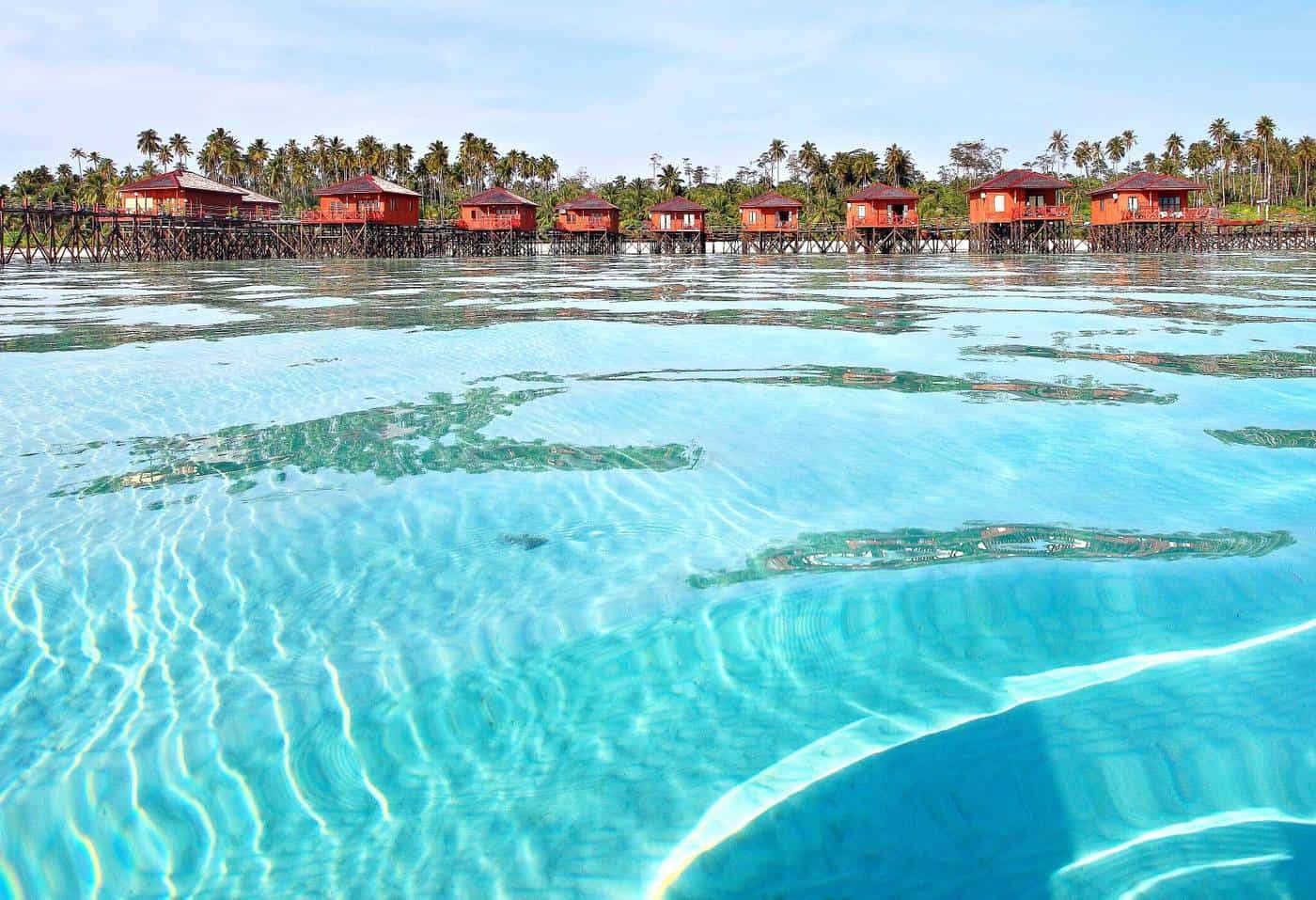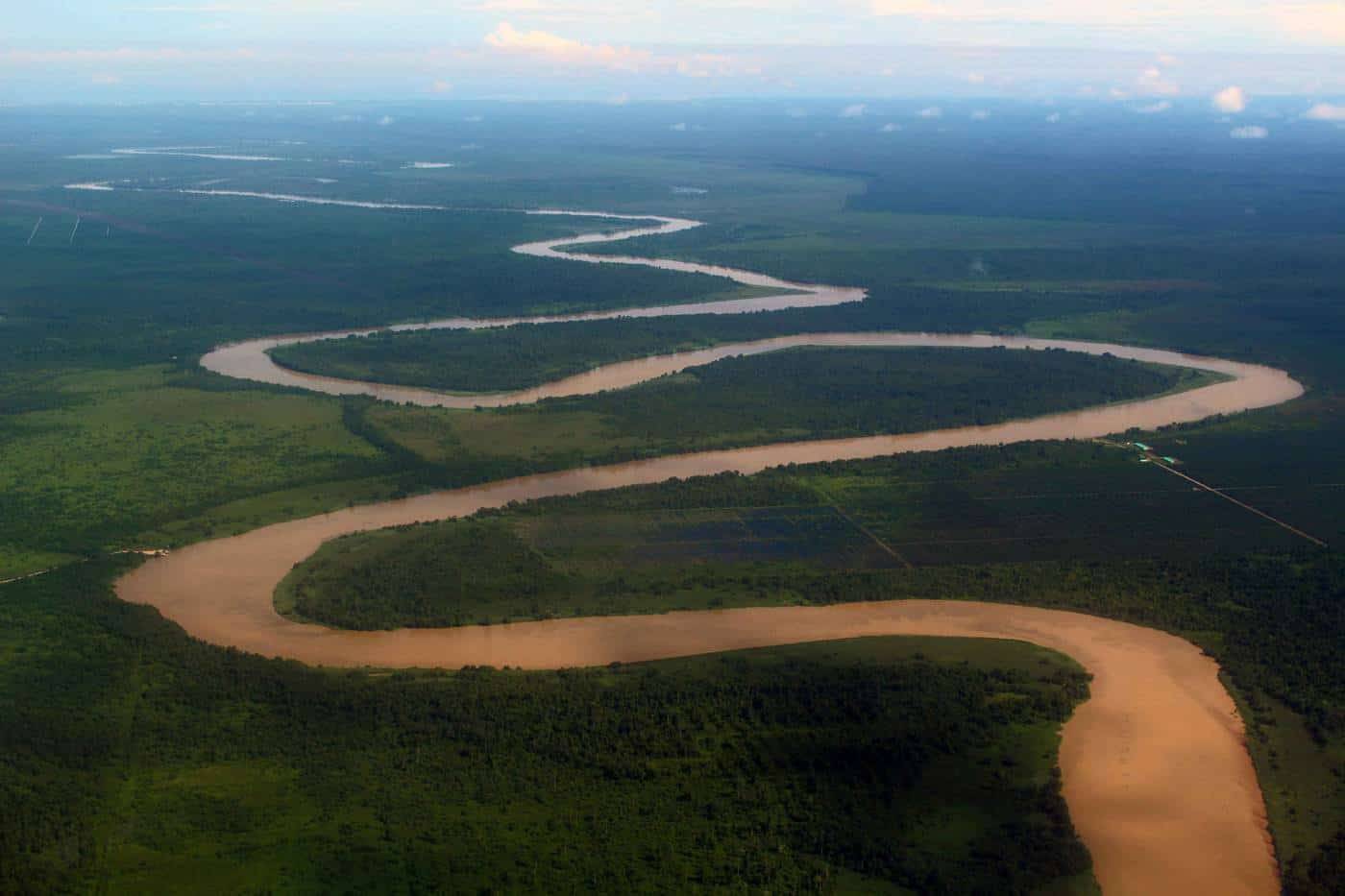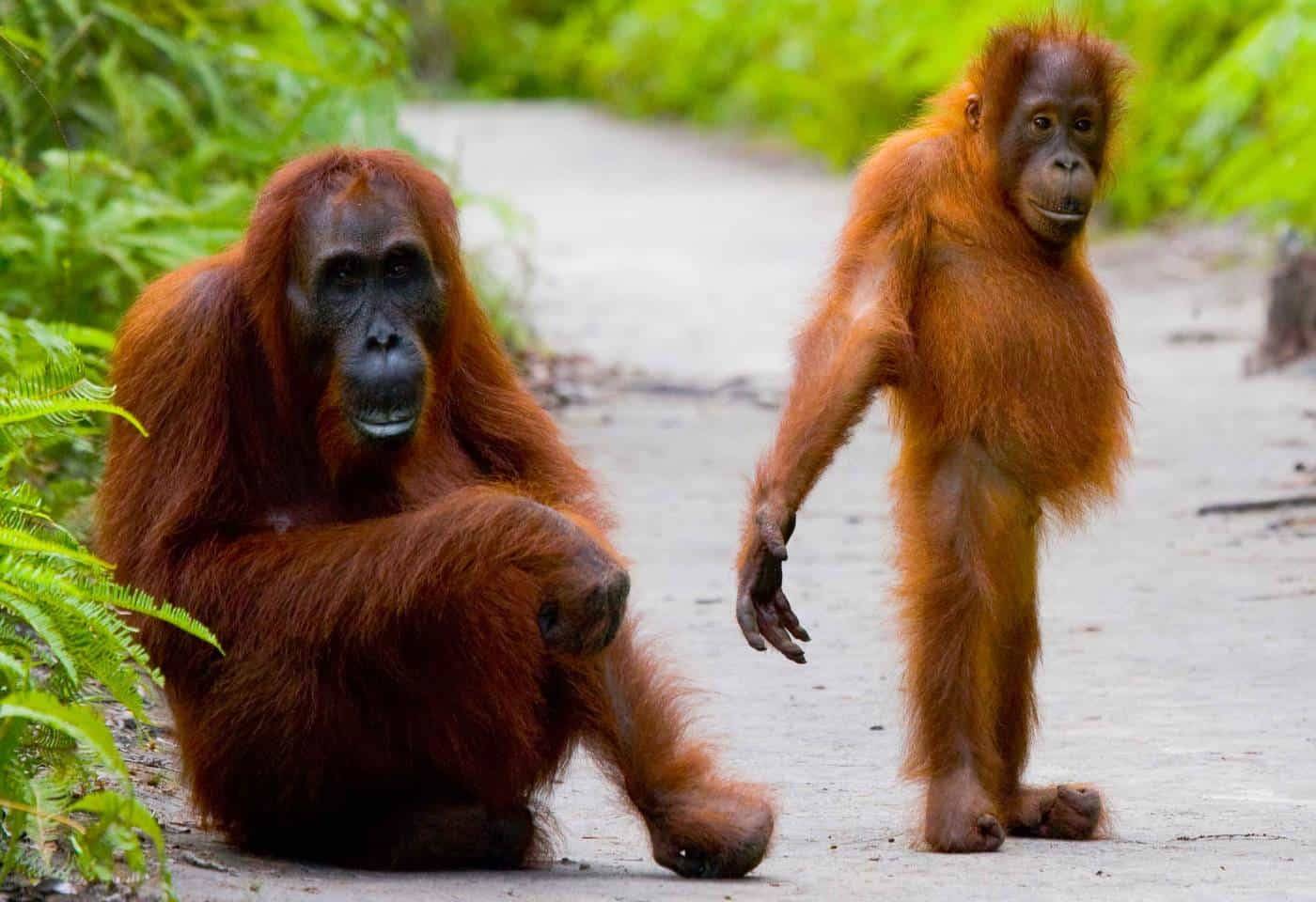
WEST KALIMANTAN & THE SHAMANS OF THE EQUATOR
PONTIANAK
The capital city Pontianak cannot be labelled as a particularly charming town – noisy, grey industrial city has not much to offer. Yet every visitor interested in the native culture should search around for a couple of days to get the feel of Kalimantan.
Pontianak lies right on the equator, on the junction of the Landak and Kapuas Rivers and their brown waters indicate that one has arrived in Borneo. Kapuas River is the longest river on Borneo, and with its length of 1143 km, it is one of the largest rivers in our planet.
THINGS TO SEE IN PONTIANAK
- Istana Kadriah (Qadriyah Palace) – built in 1771, this eye-catching building is an important historical landmark for all residents
- Museum Negeri Pontianak – good displays of Dayak tribal masks, weapons, musical instruments and a replica of a traditional longhouse
- Kapuas Waterfront – a popular tourist attraction and a riverfront park providing great views of the Kapuas River
- Equator Monument – stands directly under the 0-degree equator line
- Betang Longhouse – Saham village is home to one of the longest longhouses in Borneo (186 m long, inhabited by up to 300 people)
PONTIANAK ADVENTURE TOURS
If you don`t mind getting out of your comfort zone, you should definitely book the Sungai Kapuas houseboat tour. This is a long voyage upstream the Kapuas River (Indonesia`s longest river) starts in the coastal Pontianak and ends in central Borneo, at the border with Malaysian Sarawak.
The final destination is the river town of Putussibau – the gateway to the Betung Kerihun and Danau Sentarum National Parks.
Passengers usually return by bus or fly back to Pontianak. The 5-day boat journey offers a unique experience of exploring some of the most isolated parts of the world, its murky rivers, thick jungles, abundant wildlife (e.g. orangutan) and traditional Dayak villages.
Another exciting trip leads from Pontianak to Sintang – the gateway to central the Schwaner Mountains and Bukit Baka Bukit Raya national park. Bukit Raya (278 m) is the highest peak of Kalimantan and a real ‘off the beaten track’ known for river rafting and jungle trekking.
SINGKAWANG
As the closest city to Sarawak, the town`s well-developed tourist infrastructure speaks for the fact that Malaysian border is not far away. Also called, the ‘China of Indonesia’ or the ‘City of a Thousand of Temples’, it is clear that Singkawang presents a strong Chinese legacy.
Indeed, during the gold rushes in Borneo, in the middle of the 18th century, the Chinese miners settled in the area and brought new culture and customs that are celebrated still today, especially by the Hakka People with their distinct culture and traditions.
Apart from the cultural heritage, the city is set amongst scenic hills and beaches, and that is what a regular tourist is after. Singkawang is a popular vacation destination and an ideal spot for all holidaymakers with the best beaches in West Kalimantan.
WHAT TO DO IN SINGKAWANG
- Bukit Bougenville & Chidayu Indah – tropical gardens with a nice walk
- Popular Beach Hubs – Pasir Panjang (the favourite beach resort with excellent facilities), Kawasan Wisata (white sand beach), Bajau Beach, Batu Nenek Beach (gorgeous boulders)
- Teratai Lake – an artificial lake, also called ‘Lotus Lake’, is ideal for recreation
- Gunung Roban – forested mountain that can easily be reached via a tiled track
- Gunung Poteng – a nature reserve with waterfalls, fauna and flora (here grows the largest flower on earth – Rafflesia)
- Vihara Chiking – the largest Taoist Temple in Borneo
- Cap Go Meh/Jang Ngiet Ban – the Chinese New Year celebration of the Hakka People in Singkawang is one of the most impressive events in Indonesia. The blend of the Chinese and the aboriginal cultures resulted in distinct traditions that are best showcased during this event
- Bengkayang – a region where the local eco-tourism flourishes, jungle trekking in Mount Niut Rainforest and the Bidayuh-Dayak tours can be arranged in Pontianak or Singkawang
TRAVEL TIP
Visiting the Cap Go Meh Festival is an absolute must when in Borneo, so try to plan the trip accordingly if possible. This is a day when all spirits, gods and demons of Taoism gather in Singkawan to spread their blessing upon the region.
The local shamans (tatungs) appear on the streets as a part of the big parade and perform an extreme corporal mortification and stick steel rods through their cheeks without shedding a drop of blood or leaving a scar on their faces.
The festival manifests strong brotherhood between the Chinese Hakka and the tribal Dayaks that has finally come after long years of war.
GUNUNG PALUNG NATIONAL PARK
In the last decades, illegal hand-logging has damaged parts of this, once a rainforest wonderland, and took away homes to many endangered species.
Fortunately, the Bornean forest seems resilient enough, and this marvellous reserve is slowly recovering. Being notable for its diverse flora, ranging from mangroves, freshwater swamps, lowland forest to montane forest, it is one of very few places in our planet where the visitors get a chance to admire a large scale of rare species in the wild, including the largest flower in our planet (Rafflesia), the peculiar proboscis monkey and orangutan.
Gunung Palung became a national park in 1990 and since then there is much wildlife-research conducted at the Cabang Panti Research Camp, built deep in the forest.
Today, the park is partially becoming open to public and eco-tours and jungle trekking is possible (permit required). The starting point to the national park is Ketapang (Sukadana) where tours/private guide can be arranged.
ESSENTIAL EXPERIENCES IN GUNUNG PALUNG NATIONAL PARK
- Ketapang, Melano and Sukadana – these are the jump-off points to the national park where you can organise a tour or hire a local guide and trek independently (Sukadana is the closest to the park boundaries with good accommodation)
- Nasalis Tour and Travel – pretty much the only reliable tour provider can arrange such trip to the deep jungle to meet the orangutan and other species (if you fancy an organised tour)
- Cabang Panti Research Camp – rent a local guide in Sukadana to take you to the orang-utan research centre if you prefer independent trekking (4-5 hrs jungle trekking)
- Lubuk Baji & Batu Bulan – the most popular tracks (allow at least a couple of hours each loop and you do not need any guide to do these as the paths are well-marked)
THE DAYAK TRIBES
The aboriginal hill-tribes of Dayak are one of the major reasons to visit Borneo. More than 200 of these native ethnic subgroups occupy the interior parts of the island, living in isolation and still today cultivating animism.
Once notorious warriors, known as ‘The Headhunters’ but also some of the world`s oldest ‘Tattoo Artists’, today these friendly communities happily greet the ‘rich’ Westerners within their jungle-territories, and anyone who brings some gain is welcome to stay at their famous longhouses and watch cultural performances.
There are still genuine Dayak communities that dwell deep at the heart of Borneo albeit most of the villages available to visit are living museums and quite sadly sort of ‘human zoos’.
THE DILEMMA OF ECO-TOURISM
National parks of Kalimantan have often been an object of discussion due to the past logging and still present illegal forestry. Borneo was gifted with some of the most biologically diverse habitats on Earth and also the world`s oldest rainforest. The extensive deforestation, caused by rapid industrialisation, started in the 1960s.
Since then, Borneo has undergone a dramatic transformation, and even though there were several attempts to stop these activities, illegal logging is still a big topic.
Naturally, the fast-growing tourism, especially the eco-tourism industry, does not help to prevent this from happening. Tourism not only indirectly encourages the deforestation (building new facilities, providing tours into the previously untouched areas) but also contributes to disappearing of the indigenous Dayak culture and their traditions, and it ultimately affects the future of orang-utans and other endangered species.
Therefore, every visitor is strongly advised to do some research and re-consider the concept of eco-tourism prior to travelling.
USEFUL TRAVEL TIPS
Religion – Borneo is predominantly a Muslim enclave, and conservative dress is expected at all times, especially women. Many female travellers reported situations when they felt extremely uncomfortable in some places. Besides, when travelling to the indigenous regions and Dayak villages every visitor should make themselves familiar with the local customs and follow the etiquette.
Health – There is a high risk of Malaria in Kalimantan, particularly during the rainy season (Dec-Feb). Vaccinations such as Hepatitis A, B and Tetanus are recommended. In some cases, the Yellow Fever Immunisation is required (check with your national health policies).
Transport – The only way how to get around Kalimantan is using public buses and boats (unless booking a private tour). However, this can sometimes be a gruelling experience – distances are huge, the roads tortuous and the driving hair-raising. On the other hand, it is part of the Bornean travel adventure.
Food – Kalimantan is strongly influenced by both the Chinese and Malay cuisines, hence noodles, soups and satays are popular dishes at all warungs. Chicken, fish, eggs and rice can be found on the everyday menu at most of the families and durian is the favourite fruit. Remember that the Indonesians like it hot & spicy!
Alcohol is fairly limited in Borneo
KLOTOK BOATS
Most of the river tours use the local klotok boats, specially designed navigators that can move efficiently in the narrow and often shallow rivers. Since they can access some of the least accessible places in the jungles and swamps, they started to be used in tourism as the major transport – an ideal way to spot wildlife from a very close distance.
TRAVELLING IN KALIMANTAN
Kalimantan is not a cheap place to travel at all. The locals know the value of their land and the Westerners too persistent in seeking for exciting jungle ventures. Hence that reflects in prices and also in the type of travelling here – most of the time visitors will need some help of the local guides or tour agencies.
Independent travellers who look for an ‘out of comfort zone’ trip will surely find their needs satisfied as it is quite a mission to explore the wilderness of Borneo on your own and it requires patience, good planning and lots of time.
NOTE To enter any national park and protected area in Kalimantan you will need to purchase a permit at one of the local tourist offices.

It can be challenging to move around Kalimantan, boats are the main means of transport even in big towns and cities
WHEN TO TRAVEL
The Indonesian Borneo (Kalimantan) is generally recommended to visit between June and October, during the dry season.
Especially, wildlife spotting and eco-tourism are dependent on good weather. In fact, many reserves and protected areas are only accessible outside of the rainy season.
HOW TO GET HERE
Fly to Pontianak (flights from Jakarta/Singapore/Kuala Lumpur)
To Singkawang: take a bus from Pontianak to Singkawang (150 km)
To Gulung Palun National Park: Ketapang has a small airport, and you can fly from Pontianak (30 min), but it might be costly. Otherwise, take a speedboat from Pontianak to Melano (6 hrs) and hire an ojek/catch a bus to get to Sukadana (30 min)
For all domestic flights check out the Indonesian flight companies Wings Air, Susi Air, Kartika Airlines, Lion Air, Silk Air, Sriwijaya Air and Garuda Indonesia.
For all international flights go to www.momondo.com or www.skyscanner.com
